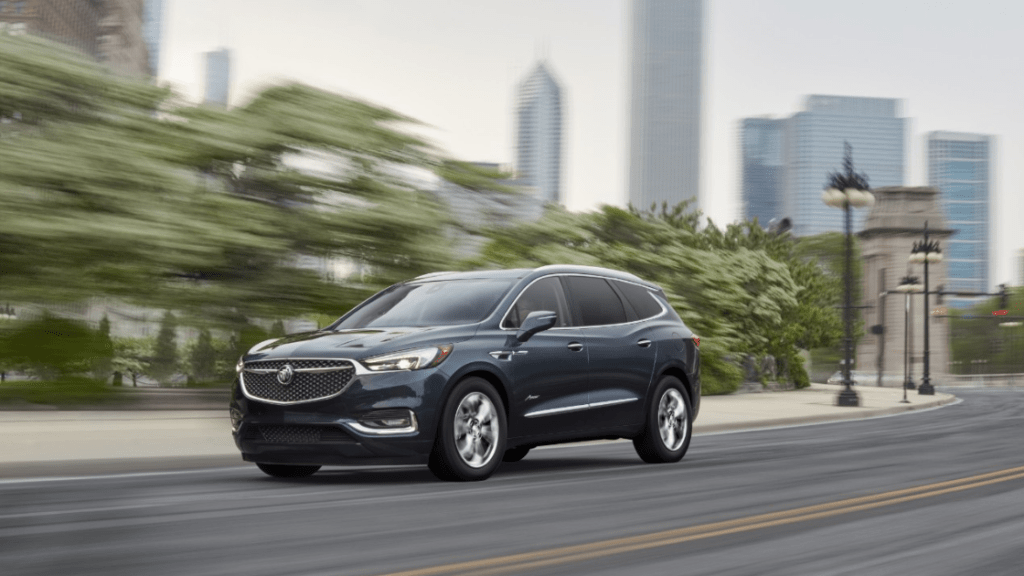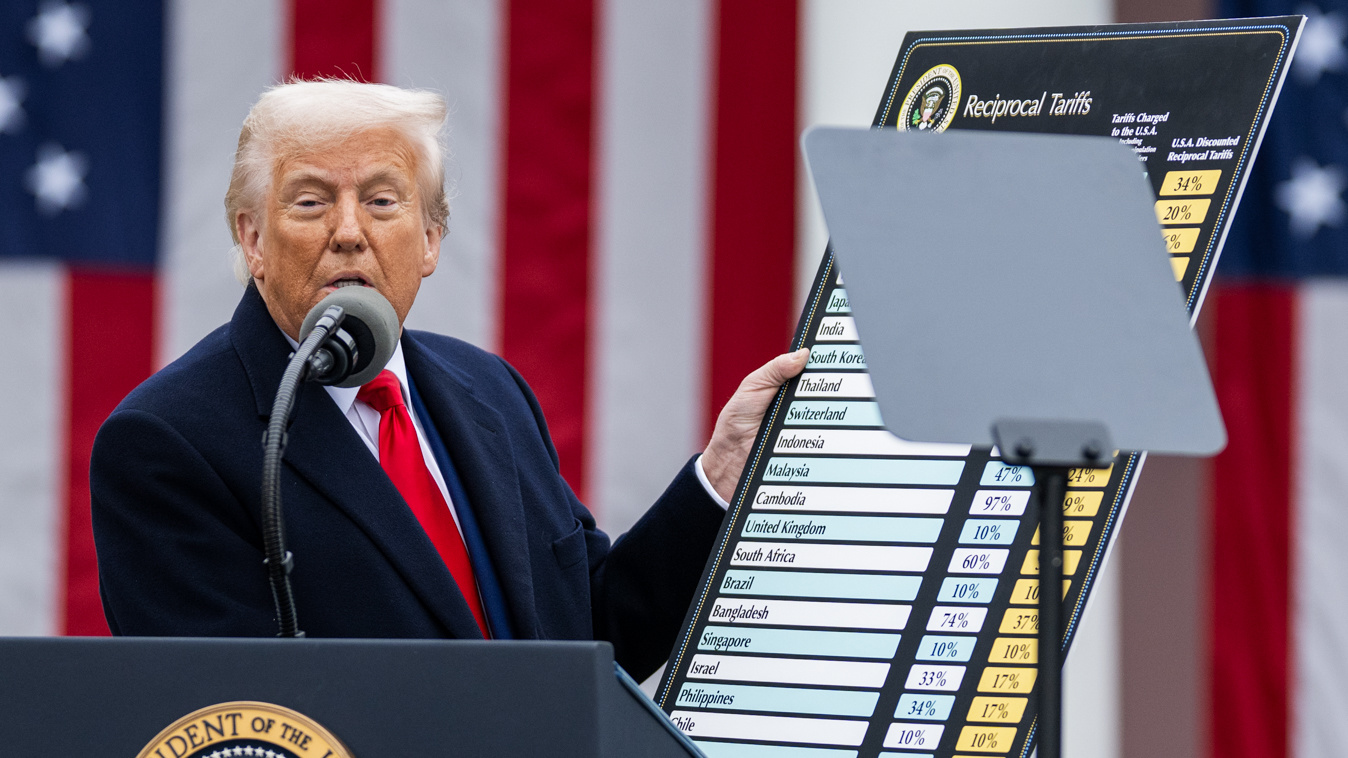The Volvo S60 and Buick Envision have shown us the value of tariffs, how tariff critics were wrong, and why we need to keep the China tariffs in place if we as a nation still want to be in the car business.
On July 6, 2018, the United States increased car tariffs from our standard 2.5% tariff to a special 27.5% tariff for Made-in-China cars. This was done as part of a response to decades of broken promises by the Chinese Communist Party (CCP) since they joined the WTO in 2001.
Despite the CCP’s terrible record on trade, criticism in the media of the U.S. tariff response was thunderous. The Alliance of Automobile Manufacturers warned that the China tariffs would serve as “a direct hit to the wallets of consumers“. The overwhelming narrative in the news was that tariffs would increase car prices and cost jobs, or at least fail to bring lost jobs back.
The tariff critics have since been proved wrong.
China Tariff Win #1: CCP-Owned SAIC Motors Stays Out of USA
Just the credible threat of tariffs can do wonders in protecting local manufacturing. That’s especially true in the automotive space. President Trump famously said (in a leaked off-the-record statement) that whenever he has a problem with Canada, “I just put up a picture of a Chevrolet Impala.” The Impala was made in Canada.
The leadup to the 2018 China tariffs began as early as June, 2016, when then-candidate Trump vowed to take on the CCP with all tools at his disposal. Shortly after being elected, from April 6-7, 2017, President Trump met with President Xi to convey that if negotiations didn’t produce a satisfactory result, the United States stood ready to impose tariffs on Chinese goods. Rust-belt autoworkers were top of mind. A week after that meeting, the CCP’s in-house, state-owned automaker SAIC Motor Corp. announced that it was halting its plans to export cars to the USA. This was an unambiguous win for every American auto worker.
China Tariff Win #2: Volvo S60 Production Goes from Chengdu to Charleston
Volvo cars became Chinese-owned in 2010, after Ford sold the brand to billionaire industrialist Li Shufu, chairman of Zhejiang Geely Holding Group Co. (Geely). Production of several Volvo car models were moved from Sweden to China.
In 2015, Geely began exporting the Volvo S60 from its factory in Chengdu, China, to the United States. The Chicago Tribune described this as “a milestone for the ruling Communist Party” in Beijing. The Volvo XC60 followed shortly thereafter as the two models share a platform.
On July 19, 2018, less than two weeks after the China tariffs went into effect, Geely’s Volvo announced that it was immediately halting exports of the S60 and XC60 from China to the United States and began importing those models from Sweden again. Geely absorbed the 25% tariff hike it paid in the interim, and U.S. consumer prices were unaffected. Today, Geely assembles the Volvo S60 at its Volvo facility outside of Charleston, South Carolina.
China Tariff Win #3: A Windfall for Treasury as the CCP Persists in Shipping Buick Envisions
Li Shufu wants to make money, and so Geely acts accordingly. But the CCP has a much more ambitious agenda and the resources to see it through. Back in 1997, the CCP enticed General Motors into the Chinese market, but on the condition that it do so through a joint venture with the CCP’s own SAIC Motor Corp. (Incidentally, after China joined the WTO in 2001, American, European and Japanese automakers were supposed to be released from their forced JV contracts, but the CCP successfully shrugged this off.)
Fast forward to November 2015, and the CCP’s relationship with GM was fully consummated. GM reported that it too would start importing the SAIC-GM built Buick Envision from China. General Motors was on the path of merely being a brand collecting royalties, like Nike, letting China sweat the manufacturing. In 2016, vessels loaded with tens of thousands of Made-in-China Buick Envisions started arriving in U.S. ports. The MSRP was $38,645. Laissez les bons temps rouler.
In March, 2018, the Office of the U.S. Trade Representative (USTR) published its findings of fact into its China trade investigation. USTR’s fact finding report cited outside media reports to show how the CCP had screwed GM over in its JV with SAIC (pg. 28, 32). Nonetheless, GM went to bat for the CCP, and asked USTR for tariff waiver on the Buick Envision. Press warned that the Buick Envision may cost $8,000 more thanks to the tariffs. USTR was unpersuaded and denied GM’s tariff waiver request in June 2019. In the denial, USTR pointed out that cars were part of the CCP’s “Made in China 2025” plan to dominate manufacturing. The thinking in the administration was understandable—there was little reason for the United States to support Beijing’s long-term goals at the expense of U.S. car manufacturers.
And then a curious thing happened. Despite the warnings, the Envision’s price didn’t increase. Not only did the car’s price not jump by the predicted $8,000, it actually became cheaper for U.S. consumers. The CCP was so determined to keep exporting to the U.S. that it directed SAIC-GM to absorb the entire tariff.
The Buick Envision Preferred Trim went from $38,645 pre-tariff to $34,695 post-tariff, and then, yet again for the 2021 model year, it fell another $1,700 to an MSRP of $32,995. And all of this even with a 25 percent import tariff. Ultimately, the CCP will gladly do whatever it takes, including devaluing its currency, to ensure its factories operate at full capacity.
While it’s distressing that the CCP is willing to absorb a 25% vehicle tariff year after year, the upside is a windfall to the U.S. Treasury. As of November 2020, over $69 billion has been collected from the special China tariffs. To put that into context, our most significant automobile industrial policy is the U.S. electric vehicle tax credit, which gives U.S. consumers $7,500 off the price of a new electric car. That program has cost the Treasury $2.2 billion over six years, from 2011 to 2017.
Fortunately, we haven’t seen more SAIC-GM cars in the USA. Indeed, it seems fair to infer that the tariffs are helping keep Detroit auto workers employed. In November 2018, GM said it would close its iconic Detroit-Hamtramck factory for good. But after the tariffs took hold and GM’s tariff exclusion was denied in June 2019, GM announced in October 2019 that Detroit-Hamtramck would stay open after all.
All-Time Tariff-Win: The “Chicken Tax” of 25% on Trucks
In 1964, the United States imposed a 25% tariff on light trucks after a trade dispute with the EU, hence our truck tariff became known as the “Chicken Tax”. The name is unfortunate because it’s been unquestionably successful in keeping truck manufacturing in the USA. We don’t hear General Motors calling for the U.S. to lower our 25% tariff on trucks, and the reason is obvious: they’ve made the investment in factories and jobs here, and the tariff is keeping that secure. The evidence is overwhelming. Detroit-Hamtramck was making cars before GM announced its death; for the factory’s rebirth, it will be making trucks, starting with the new GMC Hummer electric truck.
Indeed, the combination of the $7,500 electric vehicle tax credit and a 25% tariff is driving a renaissance in U.S. automotive manufacturing. In 2021, America will have three new automotive manufacturers, and all of them will be making electric pickup trucks: Bollinger Motors, Lordstown Motors, and Rivian. And Tesla is building its massive Cybertruck factory on a 2,100 acre site in Texas.
Removing the China Tariffs Would be a Disaster
During the election, Vice President Biden pledged “1 million new, well-paying jobs in the American automobile industry”. He was silent on tariffs, however, focusing instead on procurement. Repealing the China tariffs right now, however, would be a disaster for U.S. automotive manufacturing for two key reasons.
First, China’s capacity to dump inexpensive cars on our market can’t be overstated. The country produced 21 million vehicles last year, compared to 16.8 million in all of North America. And China currently exports only 3% of the cars it makes. It’s no wonder the Buick Envision shipments haven’t stopped. LMC Automotive sums it up in a report from earlier this year: “All in all, it appears that the way is being paved for China to become a global export base for international auto brands by 2025.”
Second, while the electric vehicle tax credit has been a tremendous tool, GM and Tesla have currently used up their allotment, while WTO rules force us to give the credit to Chinese companies. While Geely couldn’t eat the tariff for Volvo cars, the credit is apparently enough to offset the tariff, prompting Geely to launch its Made-in-China all-electric Polestar brand in the United States as soon as next month. CPA documented the impending invasion of Chinese electric cars and the WTO issues with the electric vehicle tax credit last month.
If we’re at all serious about keeping automotive manufacturing alive in North America, we’ll:
1. Keep the China tariffs and make them permanent;
2. Fix the electric vehicle tax credit; and
3. Ignore the tariff critics like China ignores its WTO obligations.












